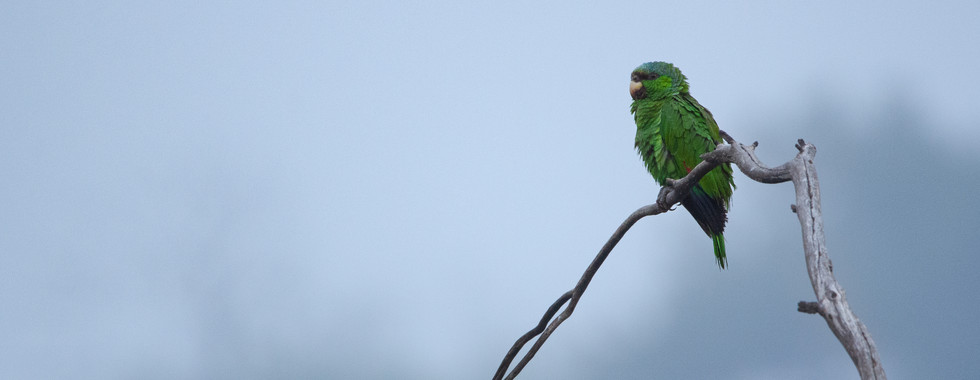Urban Rainforest
- Kenny Hills
- Apr 18
- 3 min read
There’s something magical about my early morning dog walks in Woodland Hills. The streets are still quiet, the air hangs heavy with the scent of dew-covered leaves, and the world feels like it's just beginning to stir. Right above the houses Mullholland fire road, where every day feels like there is a surprise that awaits. On one of my recent walks, the sky was cloaked in a thick, overcast layer — the kind that softens the light just enough to give everything a dreamlike quality, the type of sky photographers love to shoot in. As we walked along the familiar route, and we approached our usual stop: an old, gnarled tree that I’ve come to know as my birdwatching post.
I often pause here, camera in hand, capturing the occasional woodpecker, California Scrub Jay, or morning doves. Sometimes, if I’m lucky, I spot a Cooper’s hawk gliding overhead or see a small group of acorn woodpeckers bouncing between the branches. But this morning was different.
From a distance, I noticed something unusual — six birds perched in various spots across the tree. That alone was enough to catch my attention. Normally, birds tend to gather in pairs or tight-knit groups. These six were scattered evenly among the limbs, almost as if they were taking in the view or enjoying their own personal perch. As I got closer, a wave of excitement rushed over me. Their size, posture, and silhouette were unmistakable.
Parrots.
My heart began to race with excitement.
As someone who shares their home with an 38 year old African Grey named Tarzan, I immediately recognized the familiar build. These weren’t just any parrots — they were Amazon Parrots, a group of brilliantly colored, intelligent birds known for their personalities and piercing vocalizations. Their green plumage shimmered against the muted backdrop of the morning fog, with hints of yellow and blue flashing as they shifted positions. For a brief moment, it felt as though I had been transported to the rainforests of South America.
I quickly pulled out my camera and snapped a few photos, doing my best not to disturb them. They sat calmly, alert but unbothered by my presence. I took a short video on my phone too, and in the moment, I was so captivated by the visual display that I didn't even register their voices. It wasn’t until later, playing back the footage, that I heard their unmistakable screeches and chatter — a beautiful symphony that only wild parrots can compose.
Seeing Amazon Parrots in Southern California may seem like an oddity, but it’s actually part of a fascinating urban wildlife story. It’s believed that decades ago, many of these parrots were either released or escaped from the pet trade. Over time, they adapted to city life and formed thriving flocks throughout areas like Pasadena, Long Beach, and the San Fernando Valley — including Woodland Hills.
These birds, likely Lilac-crowned or Red-lored Amazons based on the location and group behavior, are resilient and resourceful. In the wild, Amazon Parrots feast on fruits, seeds, nuts, berries, and blossoms — and here in SoCal, they’ve discovered similar fare among backyard citrus trees and native plants. They’re loud, social, and impressively intelligent, often forming tight-knit bonds within their flocks.
To see them living freely — soaring above traffic, nesting in palm trees, and brightening gray mornings with bursts of color — is a reminder of how nature finds a way, even in the most unlikely places.
As they finally took flight, disappearing into the soft, cloudy sky, I felt a renewed sense of wonder and gratitude. It’s not every day that you get to experience a moment like this, a slice of the tropics tucked into your morning routine.
Have you ever spotted wild parrots in your neighborhood or while out on a walk? I’d love to hear your experience — or where you think the best urban birdwatching spots are in Southern California! Drop a comment below.






















